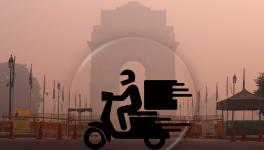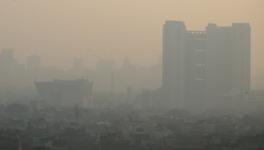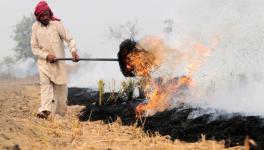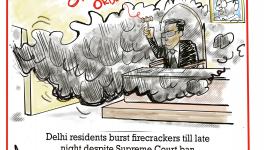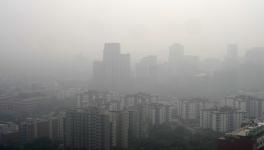Delhi-NCR Air Quality in 'Emergency' Category, EPCA Declares Public Health Emergency
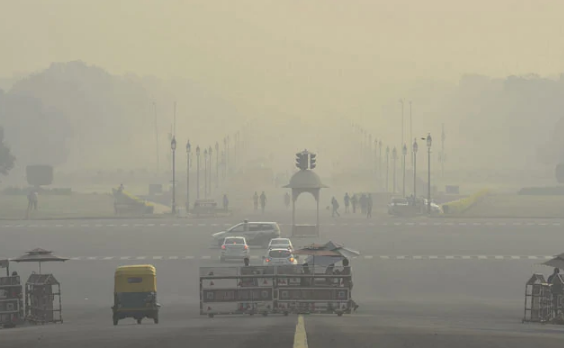
Image Courtesy: NDTV
A Supreme Court-mandated panel on Friday declared a public health emergency in the Delhi-NCR region and banned construction activity till November 5.
As pollution level in the region entered the "severe plus" category, the Environment Pollution (Prevention and Control) Authority also banned bursting of crackers during the winter season.
The air quality in Delhi-NCR deteriorated further Thursday night and is now at the severe plus level, EPCA chairperson Bhure Lal said in a letter to the chief secretaries of Uttar Pradesh, Haryana and Delhi.
"We have to take this as a public health emergency, as air pollution will have adverse health impact on all, particularly our children," he said in the letter.
Air Quality Drops to 'Emergency' Category
A Central Pollution Control Board official said the AQI entered the "severe plus" or "emergency" category late Thursday night, the first time since January this year.
According to the official data, the overall AQI was 582 at 12.30 am.
If the air quality persists in the "severe plus" category for more than 48 hours, emergency measures such as odd-even car rationing scheme, banning entry of trucks, construction activities and shutting down schools are taken under the Graded Response Action Plan, the official said.
The hazardous pollution levels forced a number of people to miss morning walks and other activities.
The number of masked faces continued to grow as the city remained shrouded in pungent haze for the fourth consecutive day.
At 8.30 am, the capital's overall air quality index stood at 459. It was 410 at 8 pm on Thursday.
All the 37 air quality monitoring stations across Delhi recorded the air quality in the severe category on Friday morning.
Bawana was the most-polluted area with an AQI of 497, followed by Delhi Technological University (487), Wazirpur (485), Anand Vihar (484) and Vivek Vihar (482).
Neighbouring Ghaziabad was the most-polluted city in the country, with the level of PM2.5 -- tiny particulate matter less than 2.5 microns that can enter deep into the lungs -- reaching as high as 493.
Greater Noida (480), Noida (477), and Faridabad (432) also breathed extremely polluted air.
An AQI between 0-50 is considered "good", 51-100 "satisfactory", 101-200 "moderate", 201-300 "poor", 301-400 "very poor", and 401-500 "severe". Above 500 is "severe-plus or emergency" category.
Delhi is impatiently hoping for favourable meteorological conditions to blow away the toxic air, as health experts said the hazardous air pollution has become a serious health concern for about two crore residents.
"Intake of every 22 micrograms per cubic metre of polluted air is equivalent to smoking a cigarette. So whether the PM2.5 level is 700 or 300 units, the impact is still as bad. People need to take precautions, especially those suffering from asthma, bronchitis or other respiratory illness," said Dr Arvind Kumar, lung surgeon at Sir Ganga Ram Hospital here.
Weather experts said increased wind speed due to a fresh western disturbance approaching the northern region would help disperse pollutants faster from Saturday.
Parents are a worried lot, as health experts say children breathe faster, taking in more pollutants.
Deputy Chief Minister Manish Sisodia had on Wednesday said the decision to shut schools would be taken "when the need arises". In November 2017, the government had shut schools for a few days due to the deteriorating air quality.
The government, however, started distributing 50 lakh N95 masks, considered one of the good quality masks for tackling smog, among school students in Delhi on Friday morning.
Meanwhile, the BCCI said it would carry on with the India-Bangladesh T20 at the Feroz Shah Kotla grounds on Sunday, disregarding concerns raised by environmentalists about the health of players and thousands of spectators.
The AQI takes into account five chief pollutants -- particulate matter with a diameter less than 10 micrometres (PM10), PM2.5, ozone (O3), nitrogen dioxide (NO2) and carbon monoxide (CO).
The higher the AQI value, the greater the level of air pollution and health concerns.
Get the latest reports & analysis with people's perspective on Protests, movements & deep analytical videos, discussions of the current affairs in your Telegram app. Subscribe to NewsClick's Telegram channel & get Real-Time updates on stories, as they get published on our website.









